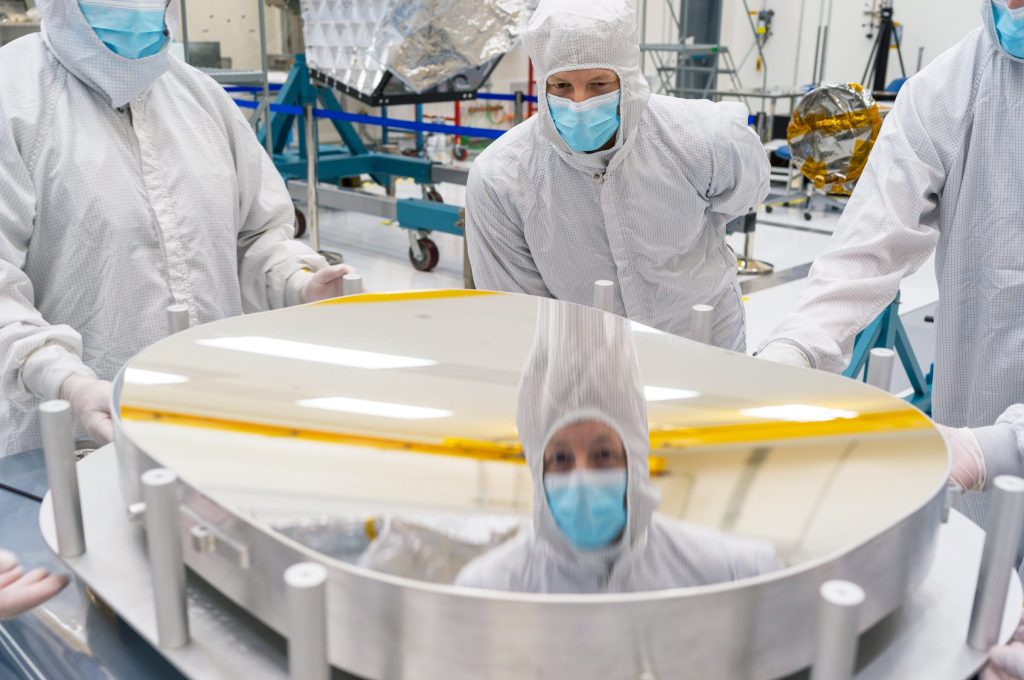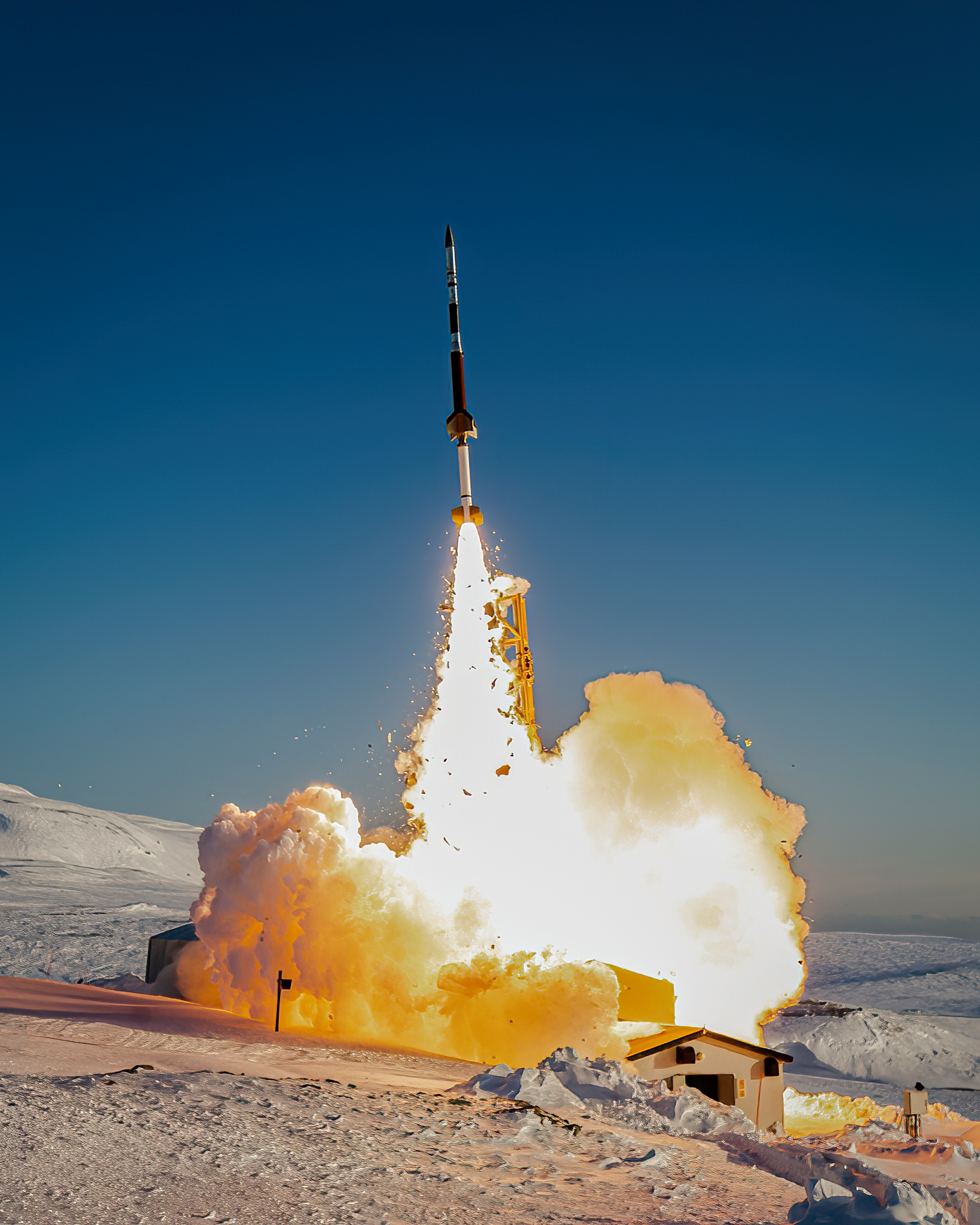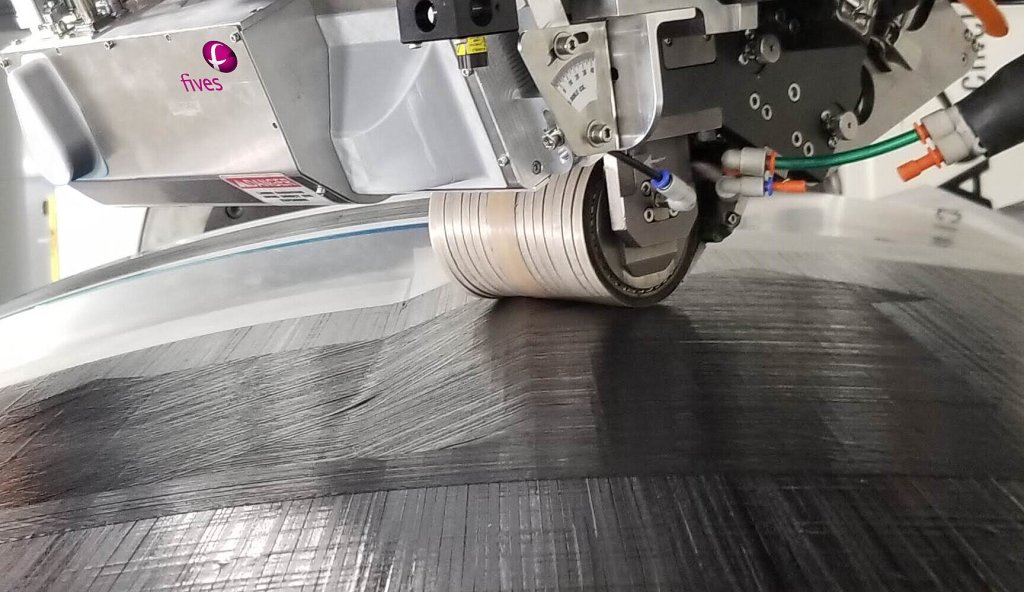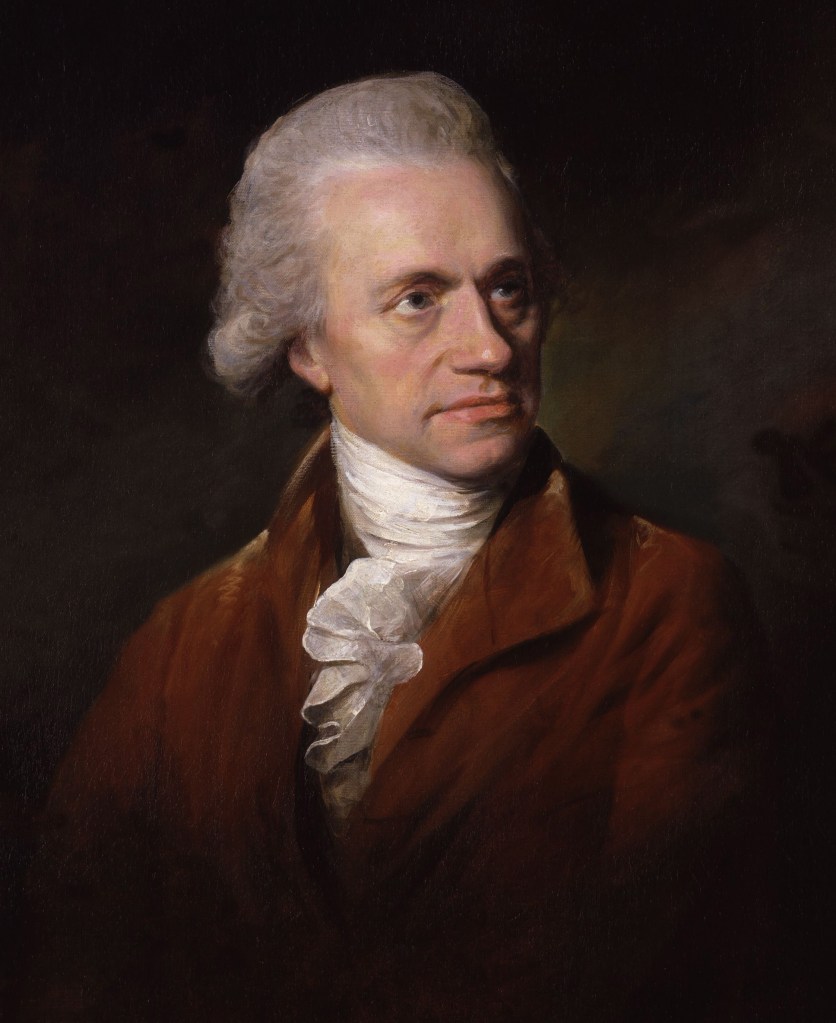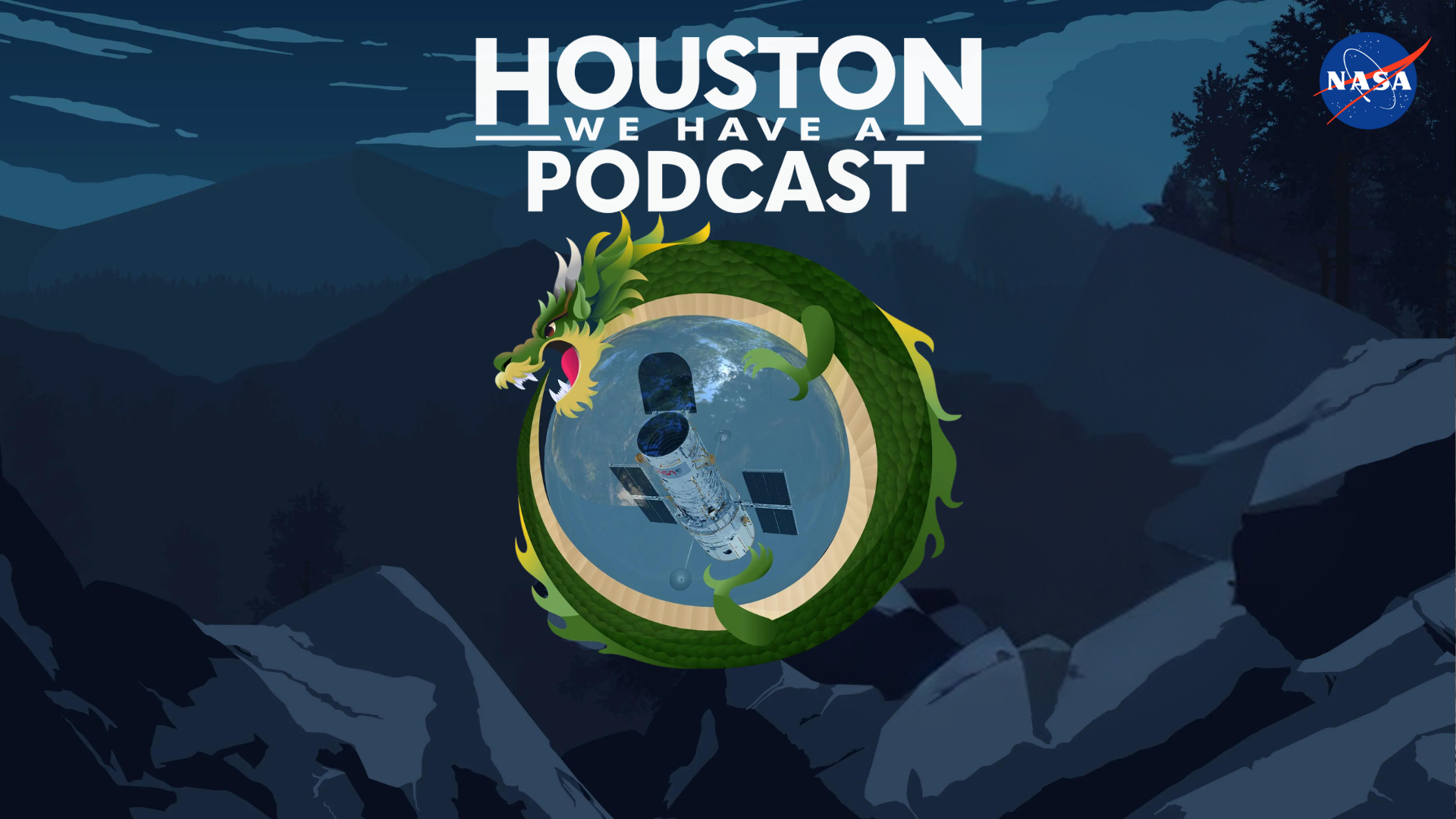
From Earth orbit to the Moon and Mars, explore the world of human spaceflight with NASA each week on the official podcast of the Johnson Space Center in Houston, Texas. Listen to in-depth conversations with the astronauts, scientists and engineers who make it possible.
On episode 345, a NASA production coordinator discusses the design and inspiration behind “The Lost Universe”, a virtual game designed to take players to a rogue planet in order to find the missing Hubble Space Telescope. This episode was recorded on April 29, 2024.

Transcript
Host (Dane Turner): Houston, we have a podcast! Welcome to the official podcast of the NASA Johnson Space Center, Episode 345, “The Lost Universe.” I’m Dane Turner, and I’ll be your host today. On this podcast, we bring in the experts, scientists, engineers, and astronauts, all to let you know what’s going on in the world of human spaceflight, and more. Interest in tabletop role-playing games, also known as RPGs, has surged in recent years. These are games like Dungeons and Dragons, where a game master guides a group of players through a series of events and something like dice are used to randomize the outcome of plot devices, famously, the 20-sided die. And now NASA has an official adventure that you and your friends can play yourselves. The Lost Universe is an adventure designed to take four to seven players to a rogue planet in order to find the missing Hubble Space Telescope.
On this episode, we’re bringing on the adventure’s designer, Christina Mitchell, a production coordinator at NASA’s Goddard Space Flight Center, to find out more about her inspirations and the science that’s included in the game. We’re going to try and be as spoiler-free as possible in this interview, but if you want to try the adventure for yourself before continuing, you can download it for free at science.nasa.gov. It’s compatible with all your favorite role-playing systems. So gather your friends and jump right into the world of Exlaris. With that, let’s roll for initiative and find out more about The Lost Universe with designer Christina Mitchell.
[Music]
Host: Christina, thank you so much for coming on Houston We Have a Podcast.
Christina Mitchell: Thank you for having me.
Host: So to start off, can you tell me a little bit about what you do with NASA?
Christina Mitchell: Yeah, so I work as a production coordinator at the Goddard Space Flight Center. So essentially what that means is I do a lot of project management for the multimedia group. So I help manage timelines, different tasks and assignments for the group, and really try to act as that bridge between the multimedia group and the missions that are requesting content.
Host: You said video productions. Could we have seen some of your work before?
Christina Mitchell: Yeah, you probably have. So if you paid attention to the “Down To Earth” series when it was premiering from JSC, I worked on a couple of those videos.
Host: Oh, very cool. Those are some really good videos.

Christina Mitchell: It was a lot of fun to work on that.
Host: So, what brought you to NASA and how’d you get here?
Christina Mitchell: So, I actually had a really interesting sort of path to get to NASA. I was at a local fair my second year of college, or I guess it was going into my second year, and NASA Langley had sent a trailer down to do, you know, outreach activities cause it was their centennial that year. And I ended up spending a ton of time there talking to the NASA representatives and by the end of the conversation—this went on for a couple of hours—at the end of that conversation, they were like, “Hey, you need to change your major and come work with us. Here’s how to apply to internships.” So a year later I did my first internship at the Glenn Research Center, and then after graduation I did another internship here at Goddard and wrapped up my internship with one down at JSC with the ISS group. And now here I am back at Goddard.
Host: Very cool. So we’re talking a lot about, you know, this game adventure that you created. What’s your history with gaming?
Christina Mitchell: So that was actually something I didn’t really get into until COVID. I had never played tabletop role-playing games before. And then when COVID hit, you know, we all took up new hobbies and that was one of mine. SoI got really into it very quickly. Got into a couple of groups, started watching streams online of people playing, and it just sort of, you know, spiraled from there.
Host: That’s a great way to get into it. And so how did you come to create The Lost Universe?
Christina Mitchell: You know, it was just one day I was thinking about, you know, the crossover between people who like tabletop role-playing games and people who are really interested in space and realize that there is actually a great deal of crossover there. And, you know, I had seen a friend of mine release The Roman Space Observer Game not too long before that. So, you know, that was a little video game, and I was like, you know, we do games from time to time, we’ve never targeted this audience though. So it just seemed like a really natural sort of thing to do. So I called up my boss and I started pitching it around, and luckily they were game.
[Laughs]
Host: Pun intended.
Christina Mitchell: Yes.
[Laughs]
Host: That’s really cool. And that’s really cool that they were open to, you know, finding this new audience with tabletop role-playing. It’s something that, you know, as you’re an example of, it kind of blew up during COVID and, you know, it’s a really interesting thing that NASA hadn’t tapped into it before, but you got to do that.
Christina Mitchell: Yeah, no, it was fantastic. And, you know, we don’t do a whole lot of that is so outside the box like that. So we had a so much fun putting it together and just really having that creativity just completely unleash on a project like this. It was fantastic.
Host: Awesome. So in The Lost Universe, the Hubble Space Telescope is the central McGuffin of the story. It launched into orbit in 1990, which amazingly is over 30 years ago. So what is Hubble and why is it important?
Christina Mitchell: Yeah, so Hubble is an orbiting telescope, so it lets us see beyond the atmospheric distortion, so we get a much clearer view from Hubble than we would, you know, from any telescope on Earth. So it let us see further back than we’ve ever seen before, clearer than we’ve ever seen before. And, you know, it’s verified a lot of information for us, like the expansion of the universe. So without Hubble, like, there’s a lot that we wouldn’t know. So, you know, I grew up on Hubble images and things, so working with Hubble was, you know, this chance to really shine a light on exactly how impactful this telescope has been.

Host: You mentioned the images and the images that came back from Hubble, and you include some of them into the adventure here. They are stunning photos, especially for their time. You also mentioned it let us look back. Are you talking like in time?
Christina Mitchell: Yeah. I can’t remember offhand exactly how far back Hubble can see, but it is, you know, light takes a while to travel, right? So, you know, the light we get from the Sun is like, it took eight minutes to get here. So, you know, the further back you go, the longer it took those images to get there. So we’re looking back like millions of years. So, you know, it’s always really interesting. It’s almost like a time machine.
Host: That’s really cool. Hubble is like a time machine. Very cool thing to think of. So do you have any professional connection with Hubble?
Christina Mitchell: So I’m more tied generally to the Office of Communications. I’ve worked on some campaigns for Hubble, like big data releases and things like that. But my tie, I don’t have any specific ties to any mission. So when this thought originally occurred to me, you know, talking to, you know, the boss, we were trying to figure out, you know, where to pitch this to, what mission would make sense, since I don’t have any of those specific ties, and we ended up deciding on Hubble.
Host: Awesome. So you mentioned you went through some different things with your boss there. We know there’s newer space telescopes like the James Webb. So why did you choose Hubble over James Webb?
Christina Mitchell: Yeah, I mean, Hubble and Webb work together, so, you know, there is potential like to do some sort of a crossover maybe eventually. But the reason we really decided to go with Hubble first is it’s established, you know, people know Hubble. I mean, people like me who have grown up on Hubble images in a way that you don’t get that sort of history when you approach the newer missions. So, you know, we really wanted to, you know, have that and it was—Hubble was launched in 1990, you know, so it, it has a much bigger history. And it’s closer in age to games like this. So, you know, that was a tie that we had in our initial pitch process was, well, Hubble was being developed around the same time that, you know, Dungeons and Dragons was first being introduced. So we have a lot of those little ties that you wouldn’t get from a newer mission, and I think that gives us an appeal to a broader audience. So one of the things we really wanted to do is make this as accessible as possible. You know, make it something that people could really sink their teeth into and really relate to. And we decided that Hubble was really the most natural fit for that.
Host: That makes a lot of sense. Hubble, you know, as you said, has been around for a while and people really do have a connection to it. We’ve been seeing these photos ever since they’ve been released in the ‘90s and even through the 2000s. And they are fantastic photographs. And it’s really cool to take that personal connection people have with having seen the photographs and now giving them another way to interact with them.
Christina Mitchell: Yeah.
Host: So the adventure includes some of these really cool photos and they are included to help explain some of the scientific concepts. How adept at the science to the players need to be to make it through the adventure?
Christina Mitchell: You know, I would say it’s pretty beginner friendly. You know, I’m myself am not a scientist. I’m a communicator, so a lot of these science concepts, when you get into the weeds, it’s Greek to me too. So, you know, we definitely designed it with trying to make it as user-friendly as possible. So you know, there’s a lot of consulting with scientists involved, but I think, you know, overall, I think we did a pretty good job of breaking it down to really its most basic elements to really, it is educational, but at its core, it’s really just a fun gameplay experience. So we didn’t want to lose that fun element by getting too into the weeds on the science.
Host: That’s really good. Making it accessible is good. I’ve read through it and it seems to make sense to me. But again, I’m a communicator as well, not a scientist, so it’s good to know that, you know, people outside of NASA should be able to pick this stuff up really easily.
Christina Mitchell: Yeah. And I think it helps that everyone who worked on it was a communicator. So if there was one area that, you know, maybe someone knew a lot more about than anyone else, and there were some puzzles that got way more complicated than they needed to be at points, and then we were able to bring them back down. You know, we had things like that because it was a group of communicators working on this. So I think that made it a lot easier to really wrap your head around.
Host: You mentioned that you were able to consult with scientists. Did they read through this and give you suggestions directly?
Christina Mitchell: Yeah, so that was a big part. So what I did was I really created the world. I created the world, created the adventure, wrote those elements, and pretty much I left holes in it for adding more science in. We sent it off to a couple of different scientists with the Hubble group. And, you know, they read through the entire thing, any science we had in there already. They fact checked it, they clarified different points if we hadn’t gotten it quite right. And then, you know, we sat down, we had a lot of conversations of what are some, you know, fairly easy concepts that we can fold in here. You know, what would make sense to add into a setting like this? How can we explain it easily? You know, we want it to be understandable for, you know, audiences as young as like maybe 10 or 12 years old. So how can we do this in a way that really flows naturally? So there was a lot of back and forth over that, a lot of different iterations. Some made it into the final game, some didn’t. There were a lot of different puzzles, just a lot of different challenges. It was really interesting that, in my mind, was the hardest part of putting this together, was getting the science in and getting it all flowing the way that it does in the final product. So, yeah, I mean, they had a lot of different ideas and, you know, the challenge whenever you’re working with scientists and communicators is, you know, finding that middle ground. So, yeah, I mean, we all had a ton of fun working on it, though.

Host: That’s really cool. And to have been able to work with them and iterate on it and everything and finally find a final product that is both fun for people to play, but also is true to the science is really cool. So we’re trying to do spoiler-free here. And so if our listeners really want to go in cold on this adventure and don’t want to know anything, I suggest maybe stepping away and coming back once you’ve played it for yourself. But we’re going to get into some setting spoilers here. And can you describe the world of Exlaris to us?
Christina Mitchell: Yes. So I had so much fun building this world. It is a rogue planet, so, you know, there’s a lot of backstory. There’s so much lore involved. But a black hole kicked it out of its star system, basically. You know, it was like Earth, orbiting nicely in its habitable zone until this black hole got too close, not close enough to, you know, absorb it, but close enough to change its orbit. So then you just have this rogue planet. And there was already some magic on the world before that happened. And what the inhabitants of this world discovered was that they could harness the energy of space around them to, you know, have more powerful magic basically. So they were able to create like a shield around the world that acts sort of like our atmosphere does. They were able to create light to keep, you know, plants alive, keep the populace fed. There was a lot of chaos at first, you know, when they realized that they weren’t in orbit around the sun anymore. The society sort of rebuilt itself. And then, you know, when the adventure takes place, you have several major cities on Exlaris that all have specific research focuses. So, you know, there’s a lot of different areas to explore things like, you know, this takes place in the city of Aldastron, which astrophysics is their focus. So, you know, there are other cities that focus on like solar science, aeronautics, things like that. So there’s a lot of different ways to explore outside of this adventure on this world. The world has these areas in between the cities that are known to be super dangerous, and people tend to avoid them. So that always creates a lot of fun for any potential adventure is, oh, well, what if we walk out of the city, what happens then? What do we interact with? So there’s so many different areas on this world that I really wanted to create a robust setting that any GM who has, you know, know some inspirations, some free ideas, might be able to turn this into their own campaign setting. So that was really why there’s so much lore for Exlaris. And, you know, there’s a whole social structure too. The academics are the leaders of this world, you know, they’re all in contest of who can publish the best research. So, you know, there’s a lot of information to go on to create a really robust setting.
Host: Yeah. You’ve got 10 pages of background before the adventure actually starts in this, which it’s a good amount to read and you think like, oh, this is both a little overwhelming, but you get through it and you’re like, this all makes sense. This is a really well-formed world that you’re dropping yourself into. Which is really neat to have that. And like you said, someone can actually go in and make this a campaign setting, not just a single adventure. They can keep playing within this world when they’re done with this adventure, or even before they get started.
Christina Mitchell: Yeah. I think, you know, one of the things that I’ve seen a lot in different comments and articles online is like, okay, clearly somebody went really into the world building. I just had so much fun with the world building, and I think I might’ve gone slightly overboard but not too far.
Host: I mean, I think it’s probably a good amount considering you need to kind of feel like you’re really there.
Christina Mitchell: Right?
Host: So with all this world building, what kind of inspirations did you have?
Christina Mitchell: You know, I love fantasy. I read fantasy novels almost constantly. So, you know, there’s a lot of those moments in worlds like that where you’re like, oh my gosh, I can just take little nuggets out and I create like this really epic setting. I’m a big fan of tabletop role-playing games too. So like the classic things like, I’m going to make a tavern and it may not be the most aboveboard place in the world, you know, things like that are just little fantasy tropes that I personally just love. So really, this is mostly a fantasy-based world, but I also, I wanted to have these nods in it to, you know, sort of what NASA is like in a way. So, you know, we go to the observatory, and you can meet like some really fun and very eclectic characters there. And the researchers that you meet are also just, I think, really fun. So I wanted to make it academic, but not in like a stuffy academic way in like a, if I were walking down the hall in one of the buildings at Goddard, I could probably, you know, obviously they’d be human. We think.
Host: So you have to question sometimes.
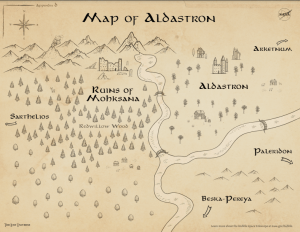
Christina Mitchell: Right, exactly. But like, characters like this are the people that you would find walking around at a NASA center. So, you know, I wanted to have those little nods in it as well to, you know, we’re all here and we’re all like, genuinely having fun.
Host: You’ve got some great role-playing notes for most of these characters in here. And, you know, a few paragraphs describing who they are, what their motivations are, and also some of their eccentricities, which is really cool because it really helps the game master put themselves in the shoes of this character to then make them more real for the players.
Christina Mitchell: Yeah. You see, I love to write, and that probably shows, but you know, one of my favorite things when I write is, you know, after creating the world, after creating the setting, I love creating the characters that would live in there. You know, trying to figure out exactly what makes them tick. And I wanted this to be really easy to run. So I didn’t want the GM to have to like, be sitting there trying to figure out, okay, well there’s this NPC that has literally no information about them. How do I run this? And I wanted it to be really easy to just pick up and run. So that was part of the reason I was able to, you know, go in and say, “Okay, here’s the ins and outs of all these NPCs.” And obviously any GM can interpret that however they want to, you know, make it fun for their own table, make it unique. But, you know, I really wanted it to be easy and have just some really fun and interesting characters that I feel like you may not always get a chance to interact with.
Host: You’ve done a really good job of making these characters really unique and very interesting reading about them here. You’ve also done a really good job of keeping the system agnostic, and it appears to be really new player friendly as well. How much of that was on your mind as you were creating it?
Christina Mitchell: Oh, it was first and foremost on my mind. So we wanted to make this as accessible as possible. so we wrote it based on d20 system because that is the most popular. But, you know, we tried to keep it, you know, keep any sort of numbers out of it so that, you know, if somebody wanted to use like a d6 based system or something, it would be pretty easy to adapt. We wanted to make it to where anyone can pick it up, run it on whatever system they want to pretty easily, you know, there’s obviously going to be some elements that need to be, you know, arranged differently for whatever system. Like, you know, probably your stat blocks may be slightly different depending on what you’re running in. But we really just wanted to keep it as accessible as possible. And, you know, also, yeah, new player friendly. So several of the people who worked on this project with me are not familiar with tabletop role-playing games. So I know when I sent around the first draft of this, I got so many comments in the document of like, what does this mean? What is this? Please explain. So, from there went back in and really took some time to think, okay, if someone is not familiar with tabletop role-playing games, if they don’t know the ins and outs, the lingo is not there. You know, how do we make this really friendly for literally anyone who wants to pick it up and run it? So we did spend a lot of time really trying to make it very accessible.
Host: That’s really cool. You mentioned having other people read it. Did you get to play test this at Goddard?
Christina Mitchell: Yes. So we had a couple of play tests internally and a couple of play tests externally. Honestly, I think one of my favorite play tests was actually an external group of friends that I’ve played with. That was the very first play test we did, and I accidentally TPKed them. So that’s Total Party Kill, for those of you who don’t know. So the game came to quite a bit after that. But that was the first time anybody had ever run through it. So, you know, it was just really surreal to see this little thing that I just put together, actually run. And so I ran another play test at Goddard that went much more smoothly after a few changes, I think everyone survived from that group, which was great. And then I actually got to play in it for one of the play tests. Do I didn’t, I didn’t GM all the play tests, but I had a tremendous amount of fun as a player in it as well, cause you know, in a world like this, it’s a one shot so you can create whatever character you want to play no matter how off the wall they are. I definitely milked that. It was fantastic.
Host: Do you want to tell us what kind of character you were running?
Christina Mitchell: Yeah. So I had a Tiefling Monk Warlock Multiclass.
Host: Wow.
Christina Mitchell: That was a lot of fun.
Host: That’s really cool. And it’s also cool that you, you had someone else GM it, so you knew that like, someone else could take the reins of this and, and could run you through the adventure, you know, without it being you who created it. So that’s a really good test.
Christina Mitchell: Exactly. Yeah. We tried to do several of those tests just to make sure that, you know, because when you’ve written most of it, it’s easy to fill in the gaps, like on the fly. So, you know, that was really a test of did I explain everything well enough for someone who isn’t me to figure out what’s going on? So we did several of those and the general consensus was, yeah, it works. So after that, we were ready to release it.
Host: That’s fantastic. So looking at all the names and the places in here, did you slip in any Easter eggs, of places or names of people or anything?
Christina Mitchell: Definitely. So, you know, we have the Orion Observatory, which is alluding to the Orion Nebula, the Orion Constellation. We have the Horsehead Tavern, which, you know, is a nod to one of Hubble’s more famous images. And, you know, there’s one NPC that shares the initials with Edwin Hubble. So there’s several little Easter eggs in there. And, you know, one Easter egg in particular is for people who I have played with before, one of my own home game characters is an NPC in this game. So that was a lot of fun when I was taking friends through it cause they were like, “Oh, oh no. Oh, it’s this character? Oh God.”

[Laughs]
Host: Get to put a little bit of yourself into the adventure since you wrote it.
Christina Mitchell: Exactly. Yeah. So there were definitely plenty of Easter eggs.
Host: So with this and being inspired by fantasy and everything, rogue planets, those are real astronomical things, right?
Christina Mitchell: Yeah. Yeah. So a rogue planet is a planet that is, you know, it’s not orbiting a star. So it is definitely a real thing. And I was really intrigued by the thought of using it as a setting. Cause it would’ve been really easy to be like, oh, this is an Earth-like planet in orbit around a star. But I was like, how can we make that more interesting? Like, maybe it was an Earth-like planet orbiting around a star, and then maybe it’s not anymore. So it was a really intriguing sort of way cause I wanted to pull in a lot of different, you know, science, even the parts that weren’t explained, you know, during the game itself, I wanted to sort of have the foundation of the adventure set in that science because it really is a blend of science and fantasy. So, you know, with that in mind, I was thinking about it one day and I was like, we can make this world really interesting. How can we make this the most interesting? And I was like, what if it was a rogue planet?
Host: That’s really cool. And you were kind of hint there, and I think you were saying, you know, there’s a lot of unexplored territory here. Can we expect to be returning to Exlaris in another adventure?
Christina Mitchell: I mean, you know, that’s always the hope whenever you start something like this, right? We’re not developing anything quite yet, but we’re definitely watching how things are going for The Lost Universe, and we’re not shutting the door on anything yet.
Host: Do you have any advice for any would-be players or game masters?
Christina Mitchell: You know, my biggest advice for any game like this is have fun. Don’t take it too seriously. Enjoy it. You know, as, you know, we talked about earlier when I was a player, I created an off-the-wall character. Build the character that you will have the most fun playing. It doesn’t matter. You know, what everyone else is playing. Build what you want to build, have fun with it. You know, just generally go in there and enjoy it.
Host: That is some great advice. Christina, thank you so much for joining us today. This was really cool. I loved learning more about The Lost Universe.
Christina Mitchell: Thank you so much for having me.
[Music]
Host: Thanks for sticking around. I hope you gain some XP and learn something today. You can download The Lost Universe to read or play for free at science.nasa.gov. Check nasa.gov for the latest information, and you can find all of our episodes as well as all of the podcasts across the agency at nasa.gov/podcasts. We’re on social media on the NASA Johnson pages of Facebook, X, and Instagram. Use #AskNASA on your favorite platform to get in contact with us and make sure to mention it’s for us at Houston We Have a Podcast. This episode was recorded on April 29, 2024. Thanks to Will Flato, Daniel Tohill, Abby Graf, Jaden Jennings, and Gary Jordan. And of course, thanks again to Christina Mitchell for taking time to come on the show. Give us a rating and feedback on whatever platform you’re listening to us on and tell us what you think of our podcast. We’ll be back next week.
This is an Official NASA Podcast.


